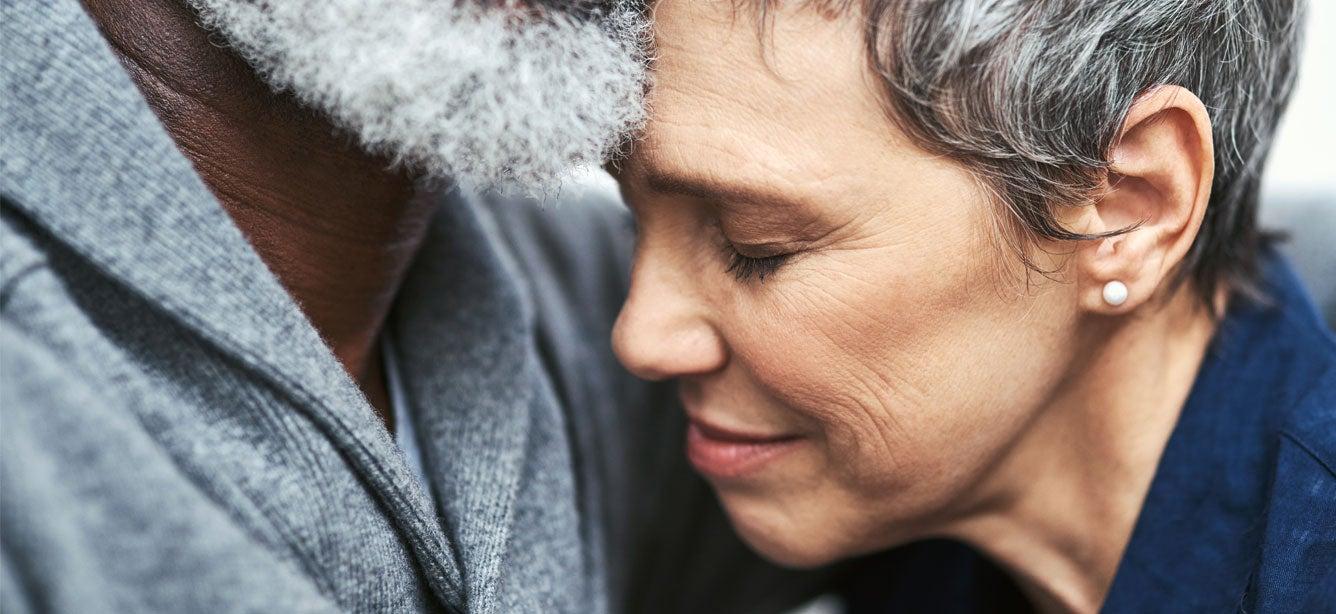
Related Topics
FACT 1: Malnourished individuals, including seniors, can come in all sizes.
- 0.4% of U.S. adults ages 60-74 are underweight.1
- 41.5% of U.S. adults ages 60+ are overweight.2
Malnourished individuals can come in all sizes.
People with malnutrition can be both underweight or overweight. Obese individuals can—and often do—miss out on important nutrients. The food you eat can give you energy but still lack key nutrients to keep you healthy. Protein is important, and if your body does not get enough, you can’t keep your muscles healthy.
Hunger, on the other hand, is defined as the feeling or sensation of discomfort or weakness caused by lack of food. For a variety of reasons, older adults can lose their appetite and may not feel hungry, even though their bodies need food.
FACT 2: Malnutrition affects all groups of people
- 1 in 14 older adults ages 60+ was experiencing food insecurity in 2021.3
- While malnutrition is more common in older adults living in health care settings, like geriatric day hospitals and nursing homes (16-19%), a significant amount of older adults living in the community are malnourished (11%).4
Malnutrition affects ALL groups of people.
Malnutrition is a significant problem across the world, including the U.S. While some of the causes may differ—lack of food, not enough of the right nutrients—too many individuals confront malnutrition.
Older adults are particularly at risk for malnutrition due to changes in our bodies as we age. We may experience decreased appetite, weight loss, decreased mobility, and limited access to healthy food, among other challenges.
Our body and nutrient needs also change as we get older, so it’s especially important to get the right amount of fluids, protein, and important nutrients like calcium and vitamin D. It is also recommended to limit salt and saturated fats, which can contribute to conditions like high cholesterol or high blood pressure.
FACT 3: Malnutrition can come from a number of factors
- Chronic conditions
- Limited income
- Trouble swallowing/chewing
- Poor dental health
- Changing taste buds
- Living alone
- Medication side effects
- Poor appetite
- Restricted diets
- Lack of mobility
- Depression
- Dementia
- Gastrointestinal disorders
Malnutrition can come from a number of factors.
All of the factors above, plus more, can lead to malnutrition for seniors. Sometimes, poor diets are caused by physical or mental changes. Other times, they are affected by our surroundings such as feeling alone or an inability to get to the store or prepare healthy meals. Often, the medication we take can affect our appetite or our ability to absorb key nutrients. And some medical conditions like dysphagia, which makes swallowing difficult or painful, may lead to malnutrition.
These factors can quickly build on each other and make the problem worse. For example, if you’re not getting the right nutrients, you might become more tired. Being tired might make it harder for you to shop, cook, and exercise. Together, these factors can cause you to lose lean body mass. Add a hospitalization with surgery into the mix, and the impact on your health can worsen.
FACT 4: You can’t always prevent or treat malnutrition by just eating more
- Adjust your diet to get all the nutrients your body needs
- Exercise to build muscle and improve strength
- Consult a Registered Dietitian Nutritionist
- Consider using an oral nutritional supplement
You can’t prevent or treat malnutrition by just eating more.
Malnutrition is an imbalance of nutrients—meaning your diet may be high in calories but is low in nutrients that your body needs. Rather than just eat more, malnourished individuals need to carefully adjust their diet to make sure they’re getting everything they need. Physical activity paired with good nutrition can help combat malnutrition by increasing muscle strength and overall well-being. Making sure you get enough protein is very important to help with recovery.
FACT 5: Malnutrition has many warning signs
- Muscle weakness
- Fatigue
- Increased illness or infection
- Feeling irritable or depressed
- Unplanned weight loss
- Decreased appetite
Malnutrition has many warning signs.
All of these factors can be a sign that you or a loved one is experiencing malnutrition. There are other signs, too, like unplanned weight loss, poor appetite, easy bruising, and even dental difficulties.
If you suspect that you or someone you know could be malnourished, here are some steps to take that can help:
- Speak to your doctor about your concerns.
- Understand the warning signs and stay informed avoid malnutrition.
- Read these simple tips to see how to eat healthy.
- See if you qualify for programs that can help pay for food.
Print or share this infographic featuring five important facts about malnutrition and seniors.
Sources
- Fryar CD, Carroll MD, Afful J. Prevalence of underweight among adults aged 20 and over: United States, 1960–1962 through 2017–2018. NCHS Health E-Stats. 2020.
- Centers for Disease Control (CDC). Adult Obesity Facts. Found on the internet at https://www.cdc.gov/obesity/php/data-research/adult-obesity-facts.html?CDC_AAref_Val=https://www.cdc.gov/obesity/data/adult.html
- Feeding America. The State of Senior Hunger in America. Found on the internet at https://www.feedingamerica.org/research/state-senior-hunger
- Kiesswetter E, Colombo MG, Meisinger C, et al. Malnutrition and related risk factors in older adults from different health-care settings: an enable study. Public Health Nutrition. 2020;23(3):446-456. doi:10.1017/S1368980019002271
- Dent E, Wright ORL, Woo J, Hoogendijk EO. Malnutrition in older adults. Lancet. 2023;401(10380):951-966. doi:10.1016/S0140-6736(22)02612-5



